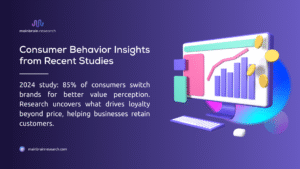Most business owners hate being told they need market research. It feels like extra work, costs money they don’t have, and delays getting their amazing idea to market. Plus, they already “know” their customers, right?
Wrong. And this mindset kills more businesses than bad products ever will.
The harsh reality is that businesses fail not because their ideas suck, but because they never bothered to check if anyone actually wanted what they were selling. Understanding why market research is important isn’t about following some business school textbook – it’s about survival in a world where customer attention is scarce and competition is fierce.
Think about it this way: would you buy a house without an inspection? Invest your retirement savings based on a hot tip from your neighbor? Probably not. Yet businesses make much bigger bets every day without doing basic homework about their markets.
The Expensive Problem Nobody Talks About
Here’s something that happens way more often than anyone admits: businesses spend months building something their customers don’t actually want. The restaurant that opens in the wrong neighborhood. The app nobody downloads. The consultant who solves problems that don’t keep people awake at night.
These aren’t bad business owners. They’re smart people who made one critical mistake – they assumed they understood their market without actually checking.
A local bakery recently spent $80,000 on fancy equipment to make artisan bread. The owner was convinced the community wanted high-quality, European-style baked goods. Makes sense, right? The research would have shown that people in that area cared more about convenience and price than artisan quality. The bakery struggled for two years before finally pivoting to focus on quick breakfast items and coffee.
That $80,000 investment could have been $2,000 in market research instead. Sometimes the most expensive mistake is the one you don’t see coming.
Your Customers Lie (But Not on Purpose)
Ask customers what they want and they’ll give you answers. The problem is, these answers often have nothing to do with what they actually buy.
People say they want healthy food, but then order pizza. They claim that price matters most; they buy expensive brands. They insist they value customer service, then choose the cheapest option every time.
This isn’t because customers are dishonest. It’s because human behavior is complicated. People don’t always know why they make certain choices, and they definitely don’t predict their future behavior accurately.
Real market research looks at what people do, not just what they say. It examines actual purchasing patterns, real decision-making processes, and genuine pain points that drive behavior.
A software company discovered this the hard way. Customer surveys said users wanted more features. So they spent six months adding requested functionality. Usage actually went down. Turns out, people said they wanted more features, but what they really needed was simpler, faster performance. The surveys missed this completely because they asked the wrong questions.
Understanding market research means knowing the difference between stated preferences and revealed preferences. Smart businesses pay attention to both, but they trust behavior more than words.
The Competition You’re Not Watching
Most businesses obsess over obvious competitors while completely missing the real threats. A bookstore worries about other bookstores while Amazon eats their lunch. A taxi company focuses on other taxi companies, while Uber changes the entire industry.
This tunnel vision happens because it’s easier to compete against similar businesses than to think about different solutions to the same problem. But customers don’t care about industry categories. They care about getting their needs met, whatever way works best.
Coffee shops don’t just compete with other coffee shops. They compete with convenience stores, vending machines, home brewing, energy drinks, and people who decide to skip caffeine altogether. Each of these alternatives solves the same basic need – getting caffeinated – in different ways.
Market research reveals these hidden competitive dynamics. It shows what customers actually choose when making decisions. This broader view often uncovers opportunities that obvious competitors miss entirely.
| What Businesses See | What Customers Actually Choose Between |
| Other restaurants | Cooking at home, meal delivery, skipping meals, and convenience stores |
| Other gyms | Home workouts, outdoor activities, sports leagues, and accepting being out of shape |
| Other consultants | Hiring employees, using software, doing nothing, and asking friends for advice |
| Other retail stores | Online shopping, buying used, borrowing from friends, going without |
Once you see the real competitive landscape, you can position your business to win against actual alternatives instead of imaginary rivals.
Why Your Pricing is Probably Wrong
Pricing stumps most business owners. They either copy competitors, add a markup to costs, or pick numbers that “feel right.” These approaches usually leave money on the table or price products out of reach.
Good pricing starts with understanding value, not costs. Customers pay for outcomes, not inputs. They don’t care how much something costs to make – they care how much value they get from buying it.
A web designer charges $5,000 for a website. Sounds expensive until you realize that the website generates $50,000 in additional revenue for the client. Suddenly $5,000 seems like a bargain.
The same principle works in reverse. A product that costs $20 to make might only be worth $15 to customers if it doesn’t solve a valuable problem. Cost-plus pricing would suggest charging $30, but market research might reveal that anything over $15 kills demand.
Market research shows what customers actually value and what they’re willing to pay for it. This knowledge enables pricing strategies that maximize revenue while maintaining strong demand.
Marketing That Doesn’t Waste Money
Most marketing budgets get wasted on messages nobody cares about, delivered through channels nobody uses, at times when nobody’s paying attention.
Businesses talk about features when customers care about benefits. They emphasize credentials when customers want results. They advertise on platforms that their target audience abandoned years ago.
Market research fixes these problems by revealing what customers actually respond to. It shows which messages resonate, which channels work, and when people are most likely to buy.
A consulting firm used to advertise their “20 years of experience” and “comprehensive methodology.” Response rates were terrible. Research showed that potential clients didn’t care about experience or methodology. They wanted “confidence in making big decisions” and “avoiding expensive mistakes.” Same service, different message. Lead generation improved by 250%.
Learning how to do market research includes understanding communication preferences. Some audiences prefer detailed information. Others want quick summaries. Some respond to emotional appeals. Others need logical arguments. Research reveals these preferences, so marketing efforts hit the right targets.
The Timing Trap
Great ideas launched at the wrong times fail. Mediocre ideas launched at perfect times succeed. Market research helps businesses understand not just what customers want, but when they’re ready for it.
Economic conditions, industry trends, seasonal patterns, and technology adoption cycles all affect market timing. A luxury service might thrive during economic booms but struggle during recessions. A productivity app might gain traction when people are focused on efficiency, but gets ignored when other priorities dominate.
Understanding market timing helps businesses launch when conditions favor success and avoid periods when external factors work against them.
Industry Blind Spots
Every industry has unique research needs that generic approaches miss. Consumer businesses need different insights than B2B companies. Technology firms have different concerns from service providers. Healthcare organizations face different challenges from retail businesses.
These industry differences affect everything from research methods to data interpretation. A survey that works perfectly for consumer products might be useless for enterprise software. Customer interview techniques that reveal insights in retail might miss key factors in professional services.
Understanding why market research is important includes recognizing that effective research must match industry characteristics and business models. Cookie-cutter approaches usually miss critical insights specific to particular markets.
Budget-Friendly Research Reality
Small businesses often skip market research because they think it’s expensive. This assumption costs them far more than research ever would.
Modern research methods make market intelligence accessible to companies of all sizes. Online surveys cost almost nothing. Social media listening is free. Customer interviews require time but no money. Website analytics reveal behavior patterns without additional investment.
The key is matching research methods to business needs and budget constraints. Sometimes, simple customer conversations provide more valuable insights than expensive focus groups. Other times, comprehensive studies are essential for major decisions.
Effective research focuses on specific business questions and provides clear guidance for action. It’s not about conducting perfect studies – it’s about gathering enough intelligence to make better decisions than competitors who wing it.
Social Media Gold Mine
Social media platforms have created an incredible opportunity for market research. Customers freely share opinions, complaints, preferences, and recommendations online. This unfiltered feedback is often more honest than formal surveys because people aren’t trying to be polite or helpful.
Facebook groups, Reddit discussions, Twitter(X) conversations, LinkedIn posts, and Instagram comments reveal real customer thoughts about products, services, and industry trends. People review competitors, ask for recommendations, and describe problems they need solved.
This organic intelligence costs nothing to gather but provides insights that expensive studies often miss. The language customers use, the specific problems they describe, and the solutions they’ve tried – all valuable information for positioning and messaging.
Building Research Into Operations
The biggest mistake businesses make with market research is treating it like a one-time project. They research before launching something new, then ignore market changes for months or years.
Markets evolve constantly. Customer preferences shift. New competitors emerge. Economic conditions change. Research from last year might be completely irrelevant today.
Smart businesses build market intelligence into regular operations. Monthly customer check-ins, quarterly competitive analysis, and annual trend reviews. This ongoing monitoring helps spot changes early and adapt quickly.
| Research Activity | What It Reveals | Business Impact |
| Customer satisfaction tracking | Service quality trends | Retention and loyalty insights |
| Competitive price monitoring | Market positioning | Pricing strategy adjustments |
| Social sentiment analysis | Brand perception changes | Marketing message refinement |
| Industry trend research | Emerging opportunities | Strategic planning guidance |
Regular research doesn’t have to be formal or expensive. Consistent customer conversations, industry publication reading, and competitive observation provide valuable ongoing intelligence.
Stop Guessing and Start Knowing
Business is risky enough without making decisions based on assumptions and hope. Understanding why market research is important comes down to this: Would you rather make educated bets or blind ones?
Every day you delay understanding your market is another day competitors might figure it out first. Every decision made without research is a gamble that could have been a calculated risk instead.
The businesses that survive and thrive in competitive markets don’t have better luck – they have better information. They understand their customers deeply, know their real competition, and make strategic moves based on solid intelligence rather than wishful thinking.
Market research isn’t academic busywork or corporate bureaucracy. It’s business intelligence that directly impacts your ability to succeed in an increasingly complex marketplace.
Ready to stop gambling with your business decisions? MainBrain Research helps companies of all sizes gather the market intelligence they need to compete effectively and grow sustainably. We don’t just conduct studies, we provide actionable insights that drive real business results.
Your competition is already making decisions based on assumptions. Don’t you think it’s time for an advantage?
For more:
- Market Research Methods That Actually Work
- How to Do Qualitative Market Research?
- How to Do Market Research Without Losing Your Mind (Or Your Budget)

















